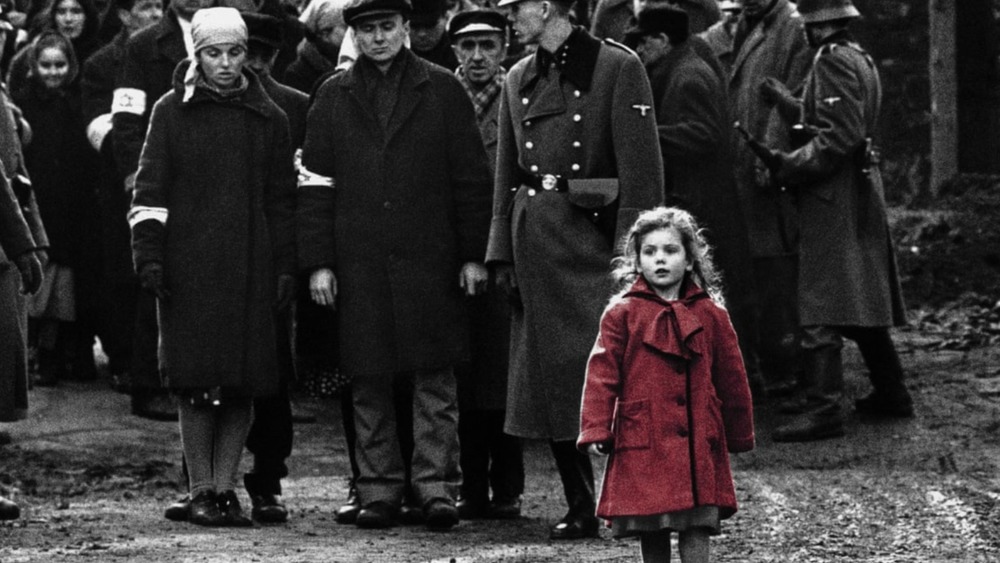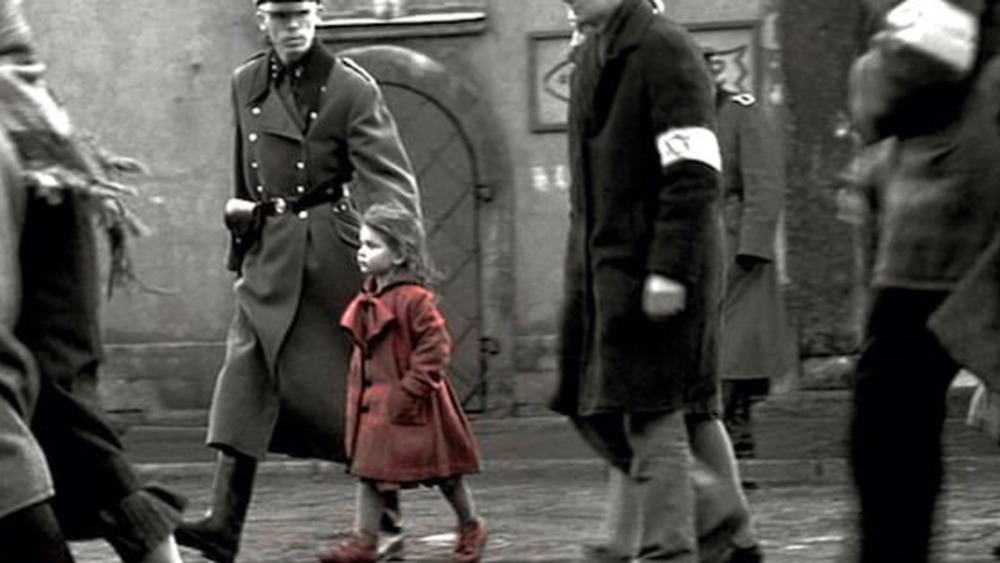What You Don't Know About Schindler's List Red Coat Girl
The historical genre is among the most revered and yet the most daunting in all of cinema, for a handful of reasons. Not only do filmmakers choosing to undertake such a sensitive set of topics, like war and national tragedy, have to keep the audience entertained and engaged throughout their production, but they also have to consider the added layer of historical accuracy. This component is incredibly vital to any work of this genre — both in telling a complete and honest story, and also keeping in mind the experiences of those who lived through this reality.
Steven Spielberg's 1993 drama Schindler's List is a fine example of what it means to tell a historical account without getting completely lost in the spectacle of being a movie. It's a harrowing account of life in Germany under the Nazi regime that details the horrors of the Holocaust in such a way that remains irreplaceable to this day. Even still, it's certainly not devoid of criticism, and has received quite a bit over the years, specifically from those debating its true historical accuracy.
A major point of contention for many is the now-iconic image of the red coat girl (Oliwia Dąbrowska), whose existence in an otherwise black and white film made her a focal point of Schindler's List. The three-year-old played a huge hand in Oskar Schindler's (Liam Neeson) gradual turn from stalwart Nazi into a savior for over a thousand Polish-Jewish refugees, humanizing her people to him, and proving that he was on the wrong side of history.
Given the red coat girl's lack of a proper name, as well as any major documentation of her existence, many questions surround her, and the validity of her real world identity. In response, Schindler's List fans on Reddit recently sought to uncover some answers, and their findings turned out to yield some very intriguing results.
The Girl in red was real, but her connection to Schindler is hazy
Reddit user redbulls2014 asked the burning question "How historically accurate is 'Schindler's List'?" in the r/AskHistorians subreddit, hoping to find some answers. The community didn't disappoint, breaking down everything from the truth of Oskar Schindler's mistress to the depiction of Poles throughout the film. In the midst of the discussion, user rkiga gave an incredibly detailed analysis of the movie's factual shortcomings, dropping some very interesting knowledge on the mysterious red coat girl, her origins, and her real-life connection to Schindler (or lack thereof).
"In the book [1982's Schindler's Ark by Thomas Keneally], that little girl in red was named Genia, who was at first hidden by a German family. On the day of these events the family was afraid the Nazis would find her and punish them for hiding her, so she had to leave. She was found and taken to the Plac Zgody roundup, where Schindler was watching from the hill," they said, going on to mention that there really was a girl named Genia who often wore a red hat, as explained to Keneally by her aunt and uncle, thus earning her a place in the book. While this is a significant piece of information that lends credence to the film's accuracy, a few other details complicate things a bit.
The inconsistencies begin when discussing her kidnapping and subsequent interaction with Schindler, as rkiga explains, "She was found and taken near the Optima factory, not at Plac Zgody, so Schindler couldn't have seen her from the hill. And anyway, Schindler was probably not even on the hill during that week. Schindler was at that hill in March of 1943 where he witnessed Jews being ripped out of houses, so the two stories were probably just combined into one."
At the end of the day, while the red coat girl was very much real — or, at least, based on a real person — her powerful big-screen moment came together by merging historical accounts for cinematic effect. Even still, this does not discount her impact on the story of Schindler's List, or her place in the annals of cinema history.

